Abstract
The channeling demonstration sought to substitute community care for nursing home care through comprehensive case management and expanded community services. The channeling intervention was implemented largely according to design. Although the population served was, as intended, extremely frail, it turned out not to be at high risk of nursing home placement. The costs of the additional case management and community services--provided in most cases to clients who would not have entered nursing homes even without channeling--were not offset by reductions in the cost of nursing home use. Hence, total costs increased. The expanded formal community care did not, however, result in a substantial reduction in informal caregiving. Moreover, channeling benefited clients, and the family and friends who cared for them, in several ways: increased services, reduced unmet needs, increased confidence in receipt of care and satisfaction with arrangements for it, and increased satisfaction with life. Expansion of case management and community services beyond what already exists, then, must be justified on the basis not of cost savings but of benefits to clients and their caregivers.
Full text
PDF

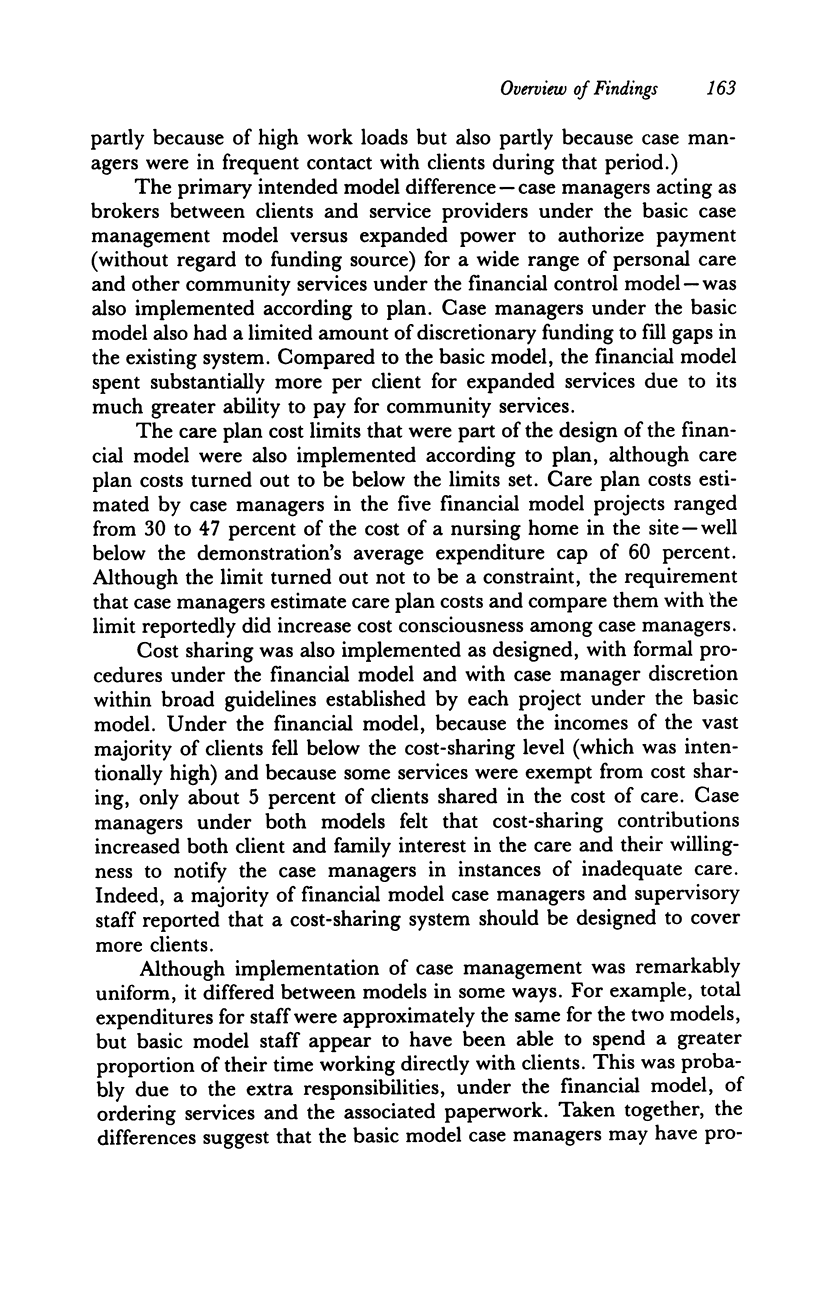
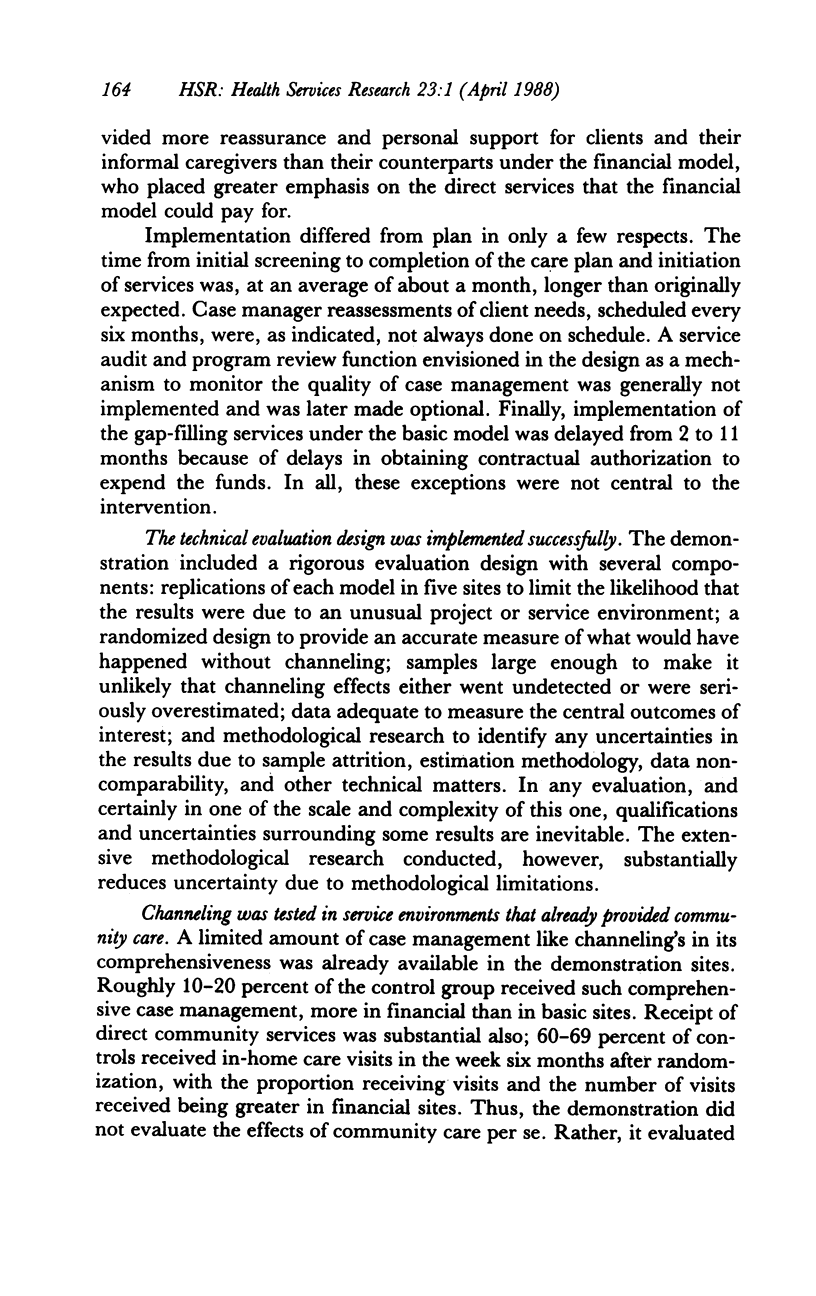
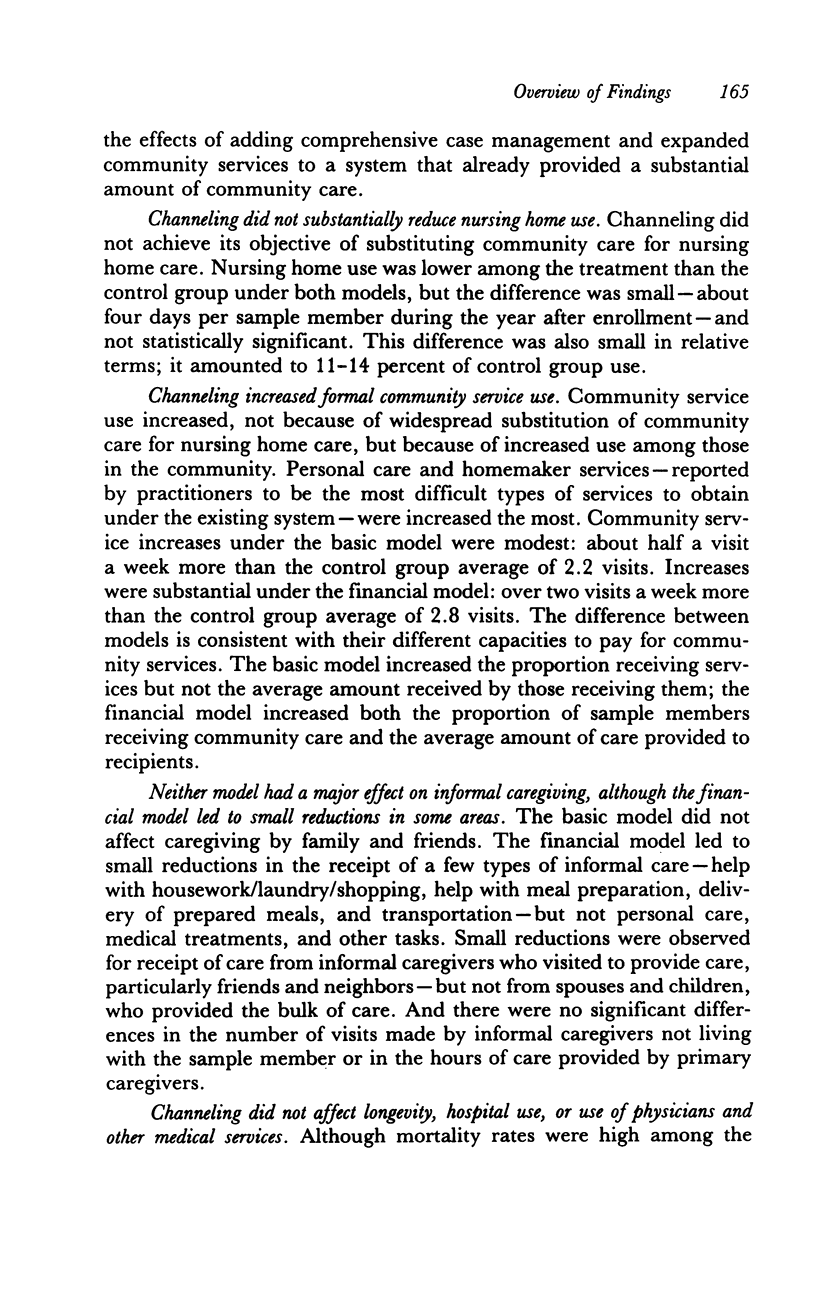

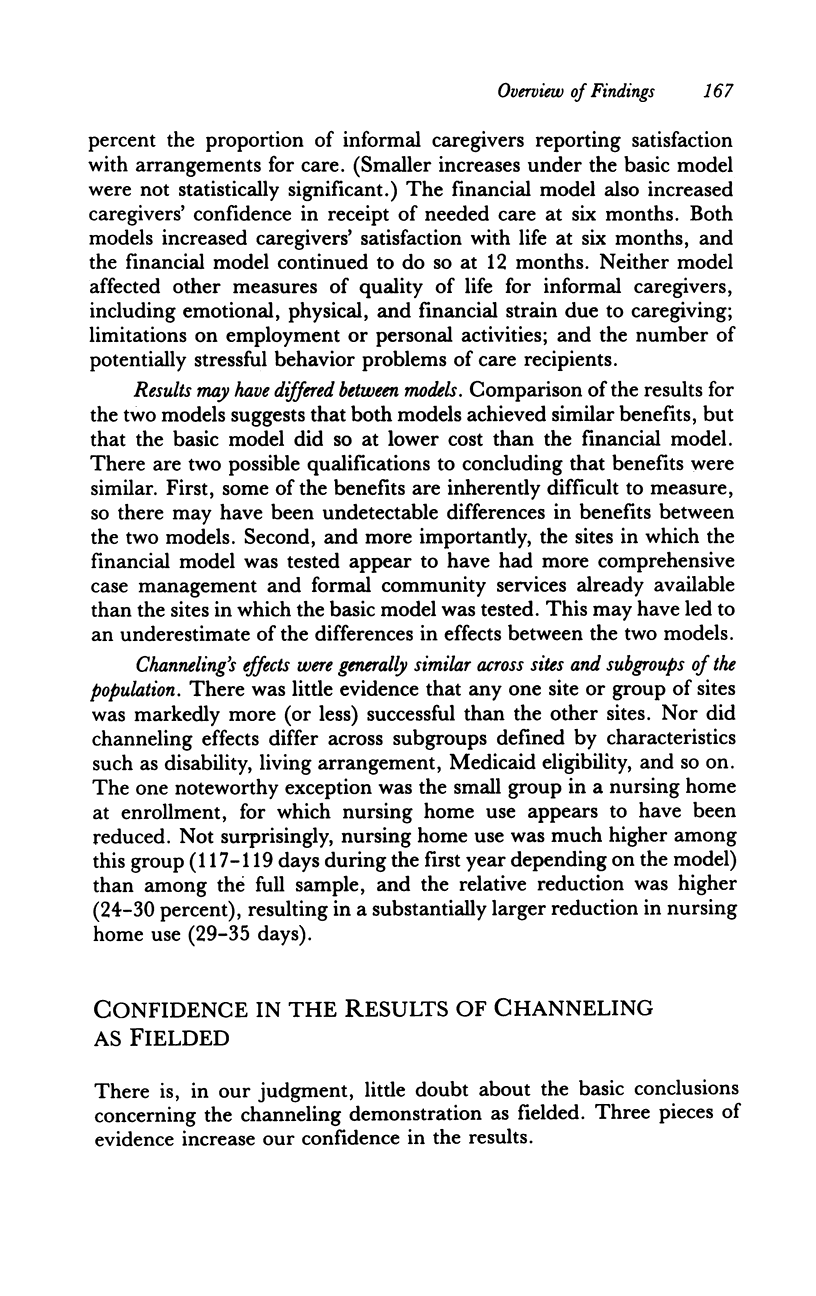
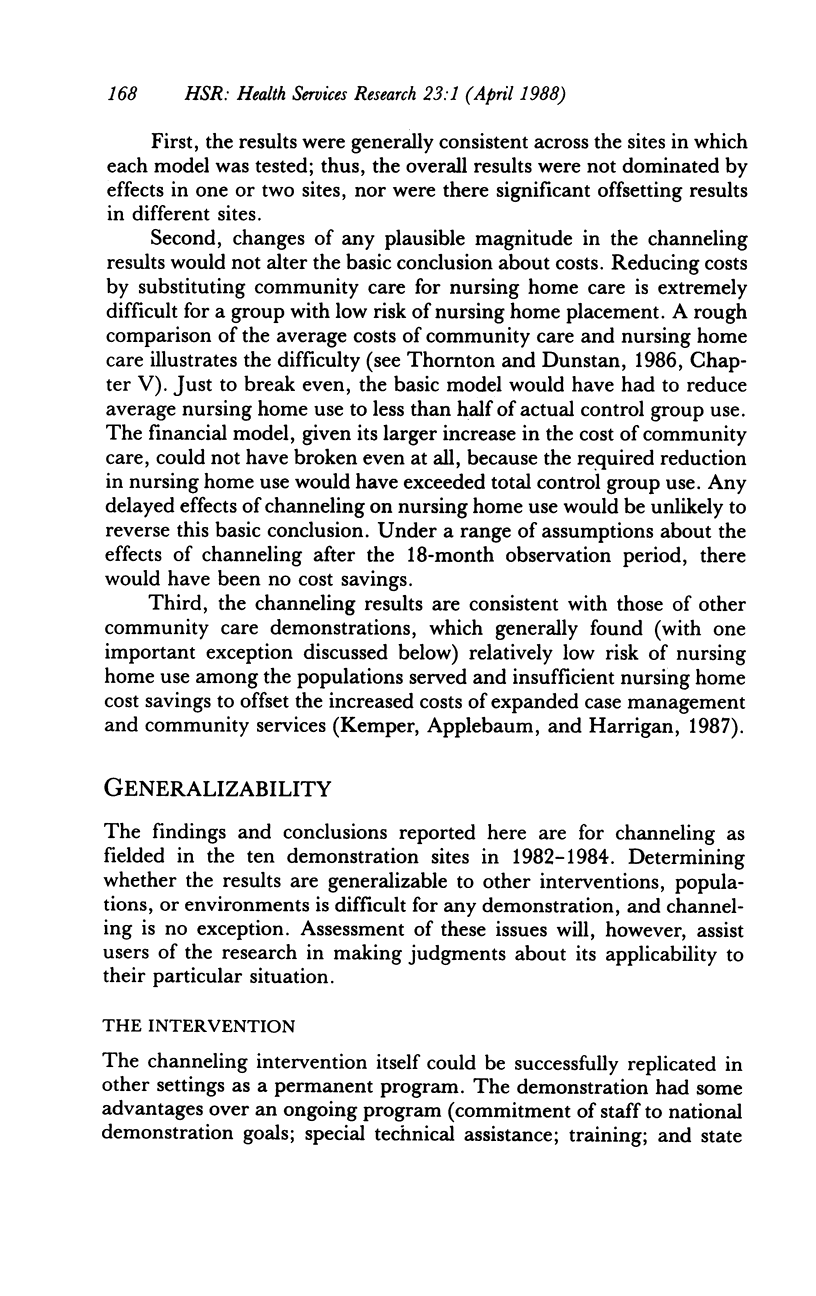
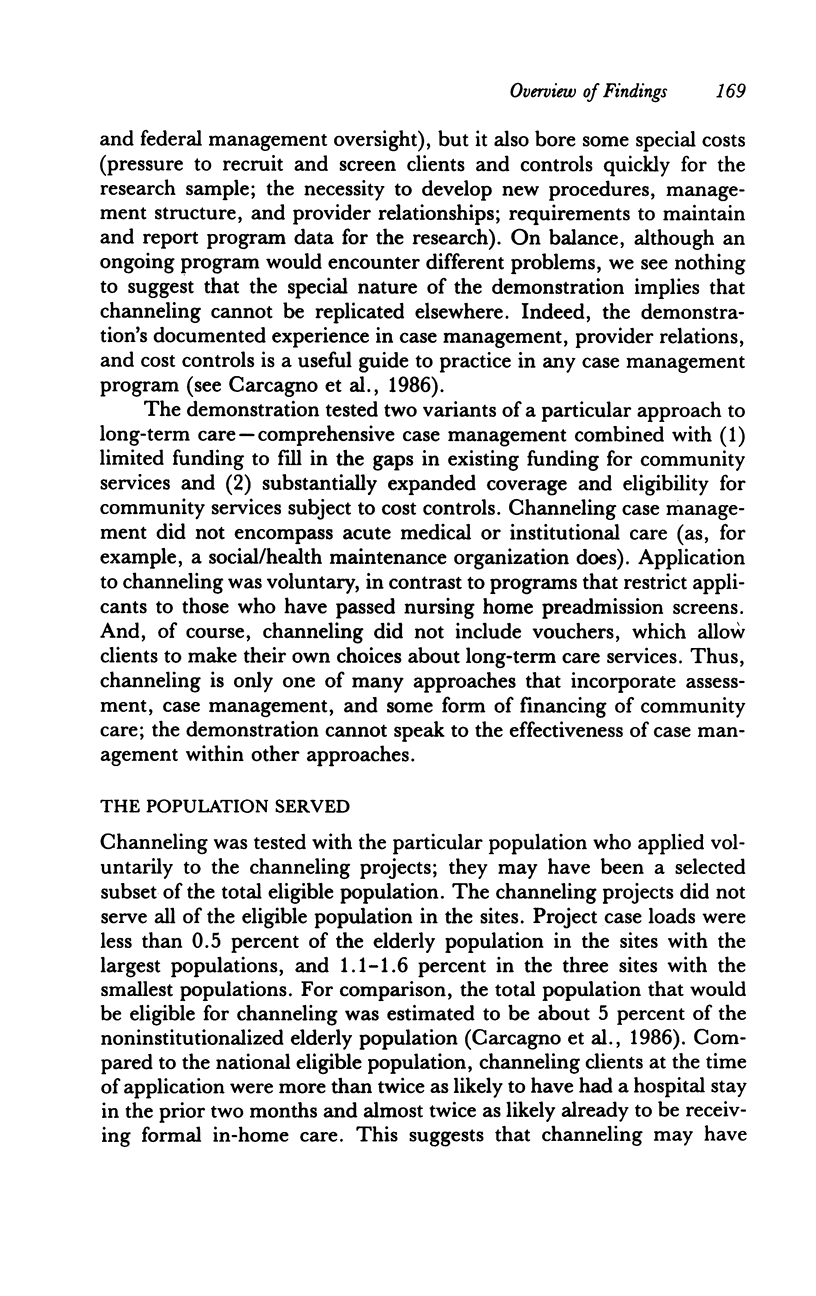
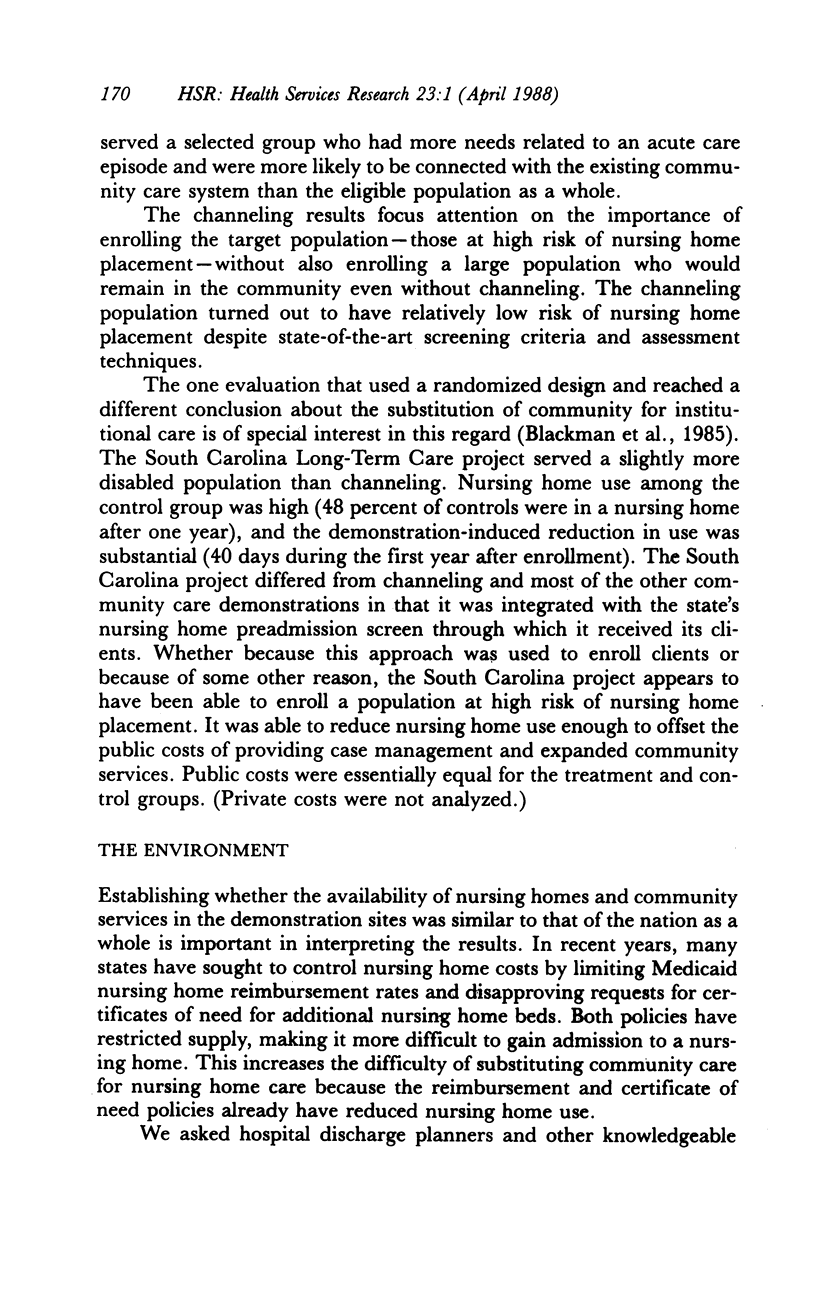
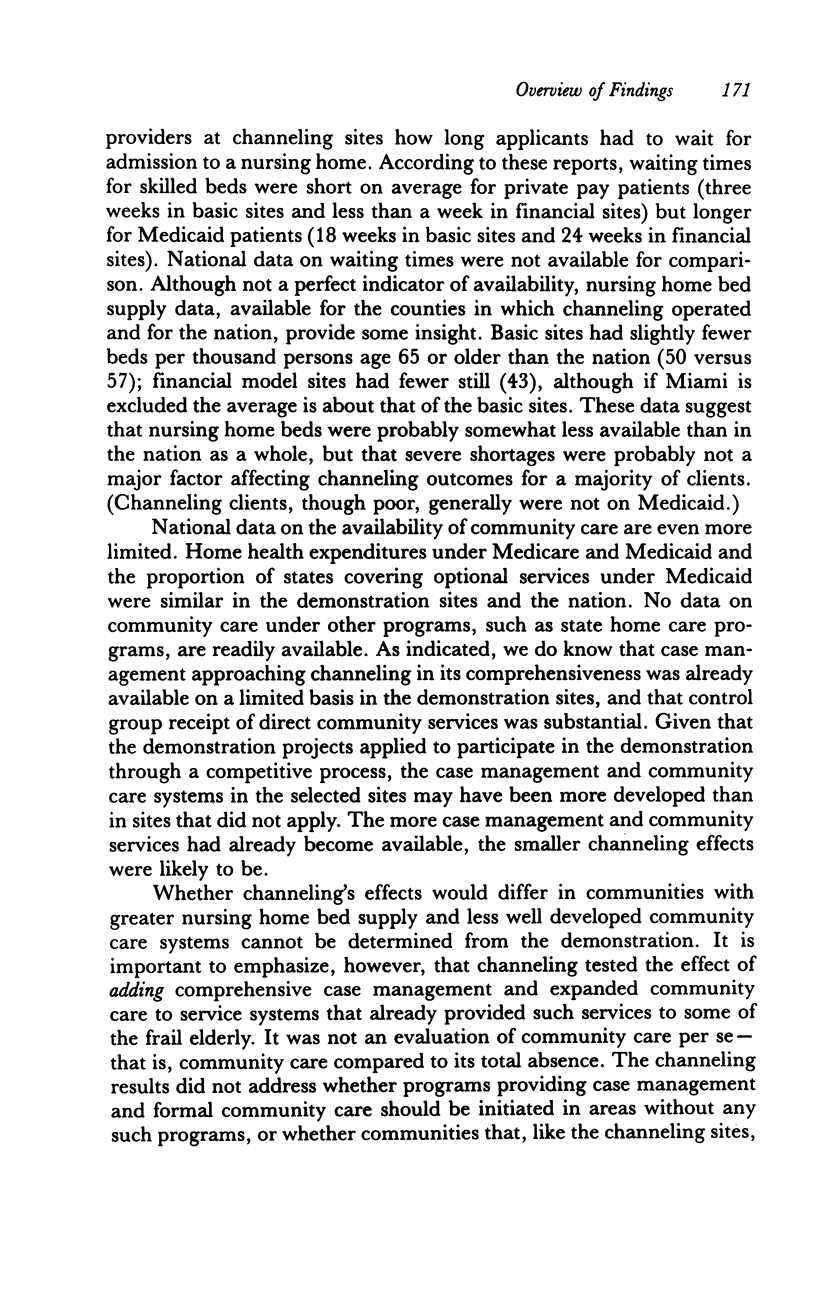
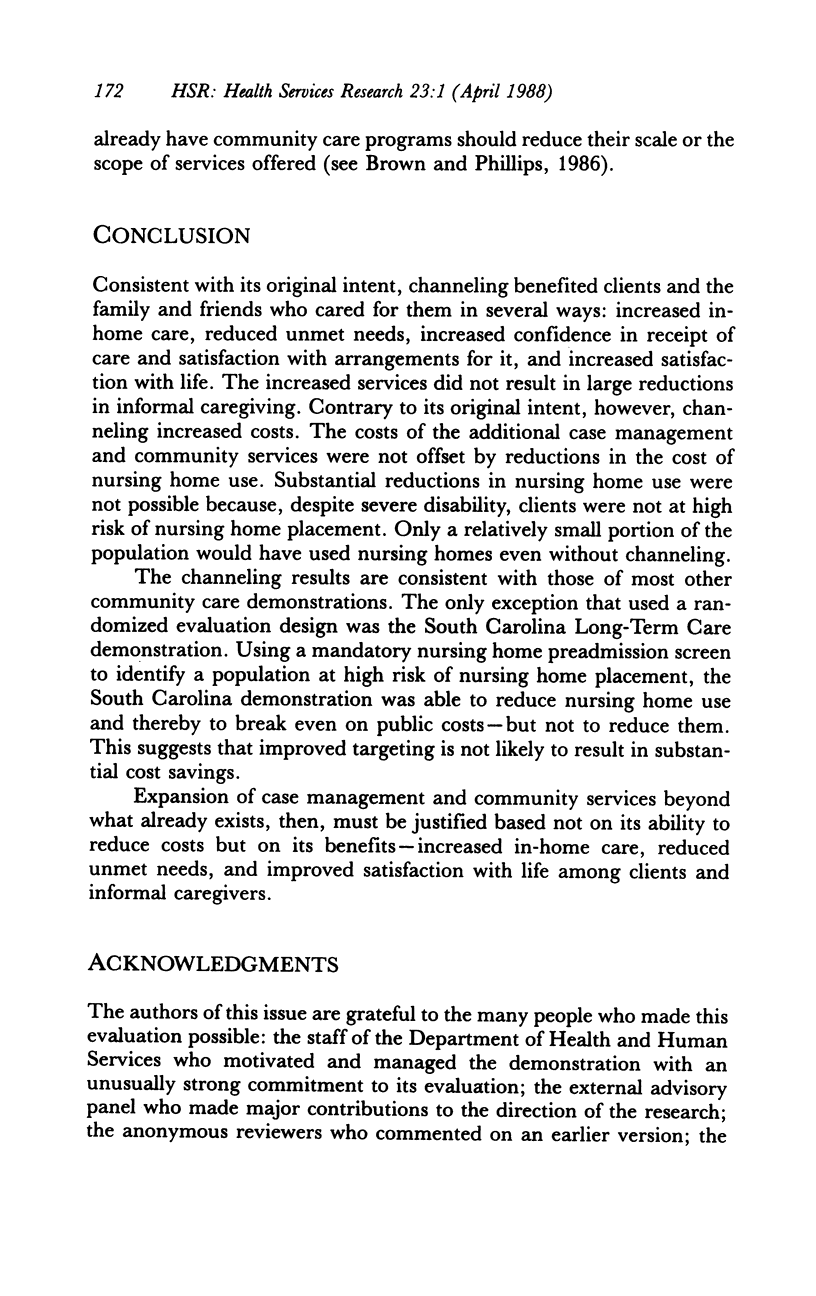
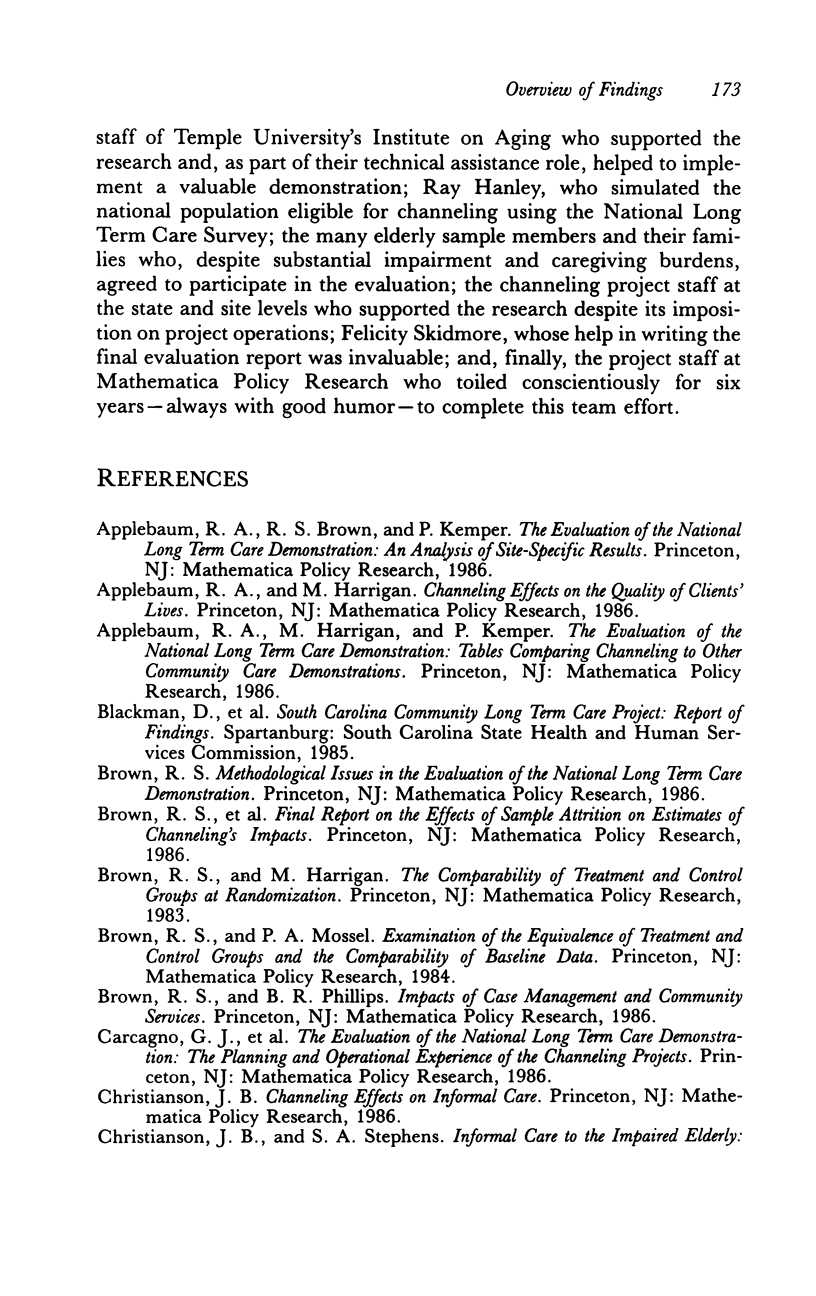

Selected References
These references are in PubMed. This may not be the complete list of references from this article.
- Kemper P., Applebaum R., Harrigan M. Community care demonstrations: what have we learned? Health Care Financ Rev. 1987 Summer;8(4):87–100. [PMC free article] [PubMed] [Google Scholar]


